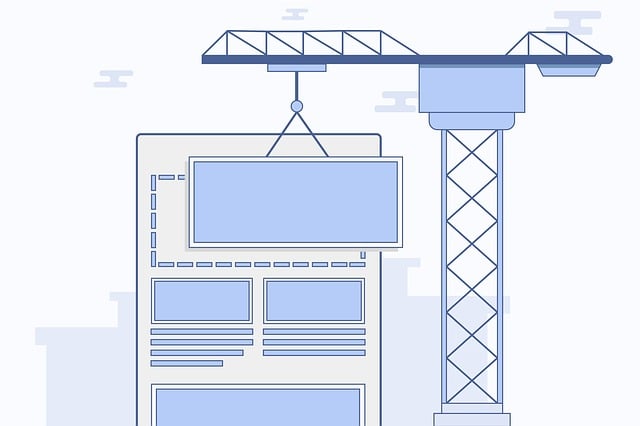In recent years, the digital landscape has seen a significant shift towards minimalist designs in web design, emphasizing clean lines, ample white space, and concise content for better user engagement. Microinteractions, adding subtle animations, enhance experiences without clutter. Voice User Interface (VUI) enables intuitive, hands-free engagement. Progressive Web Apps (PWAs) merge traditional websites and mobile apps, offering offline access and app-like performance. Personalization at scale, leveraging data analytics, creates tailored digital experiences. Accessibility standards like WCAG 2.1 ensure inclusive design for users with disabilities. Responsive design optimizes websites for various screen sizes and devices, catering to the majority of mobile-first internet users. Staying agile with these latest web design trends is crucial for businesses to maintain competitiveness.
In the ever-evolving digital landscape, understanding the latest web design trends is paramount for creating engaging and effective user experiences. From minimalist designs that simplify interfaces to micro interactions that bring web pages to life, this article explores the most compelling and impactful trends shaping the future of web design. Discover how voice user interfaces (VUI), progressive web apps (PWAs), personalized experiences, accessibility priorities, and mobile-first responsive design are reshaping the way we interact with online spaces.
The Rise of Minimalist Designs: Simplifying User Interfaces

In recent years, the digital landscape has witnessed a significant shift towards minimalist designs in web design. This growing trend is not just a passing fad but a deliberate move to simplify user interfaces, making them more intuitive and user-friendly. The latest web design trends focus on clean lines, ample white space, and concise content, creating an aesthetically pleasing experience that enhances user engagement. By stripping down complex layouts and unnecessary elements, minimalist designs allow users to navigate websites effortlessly, leading to improved conversion rates and higher levels of satisfaction.
This shift towards simplicity is driven by the understanding that less is often more in terms of digital interaction. Minimalist designs not only make websites faster and easier to load but also reduce cognitive overload, enabling users to quickly find what they’re looking for. As a result, businesses are adopting this approach to create web environments that foster positive user experiences, solidifying its place as one of the prominent latest web design trends.
Micro Interactions: Adding Subtle Splashes of Life to Web Pages

In the realm of latest web design trends, micro interactions have emerged as a powerful tool to elevate user experience. These subtle animations and visual effects, though small in scale, add a dynamic touch to web pages, making them more engaging and interactive. By incorporating micro interactions, designers can provide users with immediate feedback, guide navigation, and enhance overall interactivity without overwhelming the page with large elements or complex animations.
Web designers are leveraging micro interactions to create a sense of lifelike responsiveness on digital interfaces. A simple tap or scroll can trigger a subtle animation, such as an element fading in or out, or a subtle visual transition. These micro moments not only make the user experience more enjoyable but also help to build trust and encourage user engagement. As users interact with these nuanced elements, they perceive the website as thoughtful, intuitive, and modern—all desirable characteristics in today’s digital landscape.
Voice User Interface (VUI): The Future of Human-Computer Interaction

Voice User Interface (VUI) is emerging as a game-changer in the realm of human-computer interaction, reflecting some of the latest web design trends. As natural language processing (NLP) advances, VUI allows for more intuitive and hands-free interactions with digital interfaces, enhancing user experience. This technology enables users to navigate websites and apps using voice commands, making it particularly appealing for mobile devices, smart home systems, and a growing array of voice-enabled devices.
The integration of VUI into web design offers several benefits. It caters to users with visual impairments or those in situations where typing is inconvenient. Additionally, it promotes interactivity and accessibility, ensuring that diverse user groups can seamlessly engage with digital content. As the technology matures, designers can expect more natural and contextual voice interactions, pushing the boundaries of conventional user interfaces and shaping a future where voice becomes an integral part of our digital lives.
Progressive Web Apps (PWAs): Blurring the Lines Between Web and Apps

Progressive Web Apps (PWAs) represent a significant shift in how we interact with digital content, blurring the lines between traditional websites and native mobile applications. As one of the most prominent latest web design trends, PWAs offer a seamless experience by providing offline access to web content, delivering app-like performance, and enabling push notifications—all while utilizing standard web technologies. This means users can discover, engage with, and even install these apps directly from their browsers without needing to go through app stores.
The adoption of PWAs is driven by their ability to enhance user experience, improve engagement rates, and reduce development costs. They offer faster loading times, better usability, and consistent functionality across different platforms and devices. With the continuous evolution of web design trends, PWAs stand out as a game-changer, offering businesses an effective way to reach users with rich, interactive experiences that feel native and are accessible from any place with internet connection.
Personalization at Scale: Tailoring Digital Experiences

In the realm of user experience (UX) web design, personalization at scale is a game-changer in the latest web design trends. By leveraging advanced technologies and data analytics, designers are now able to tailor digital experiences for individual users, creating a sense of uniqueness and relevance that enhances engagement and satisfaction. This approach goes beyond simple customization; it involves dynamic content delivery, personalized recommendations, and adaptive interfaces that respond to user behavior in real-time.
Personalization at scale allows businesses to provide tailored interactions based on user preferences, past behavior, and even contextual clues. From recommendation engines that suggest products or content based on browsing history, to interfaces that adjust layout and design elements for optimal viewing, these strategies ensure users feel seen and heard. As a result, personalized experiences drive higher conversion rates, foster deeper brand loyalty, and contribute significantly to the overall success of web-based businesses in today’s competitive digital landscape.
Accessibility as a Design Priority: Inclusive Web Design Trends

In recent years, accessibility has shifted from a nice-to-have to an essential component of web design. As the digital world becomes increasingly integrated into daily life, ensuring websites are accessible to all users, regardless of abilities or disabilities, is no longer a choice but a responsibility. The latest web design trends prioritize inclusive design, focusing on creating user experiences that cater to diverse needs. This shift is evident in the adoption of established accessibility standards such as WCAG (Web Content Accessibility Guidelines) 2.1, which provide a framework for making content accessible to people with visual, auditory, motor, or cognitive disabilities.
Designers are embracing trends like improved keyboard navigation, semantic HTML structure, and high contrast color schemes to make websites more usable for everyone. Voice control interfaces and screen readers have also influenced design choices, leading to the creation of content that can be easily consumed by users relying on these technologies. Additionally, microinteractions and clear visual feedback enhance the overall user experience, ensuring that accessibility is not just a box-ticking exercise but a fundamental part of modern web design.
Optimizing for Mobile-First World: Responsive Design Evolution

In today’s mobile-first world, optimizing websites for diverse screen sizes and devices is no longer an option but a necessity. The latest web design trends heavily emphasize responsive design evolution, ensuring seamless user experiences across desktops, tablets, and smartphones. Designers are leveraging flexible layouts, media queries, and adaptive images to create dynamic and visually appealing interfaces that adapt beautifully to any digital canvas.
This shift towards mobile responsiveness is not just about technical capabilities; it’s a strategic move to cater to the vast majority of internet users who now access online content through their hand-held devices. As the landscape of web design continues to evolve, staying agile and adapting to these latest trends is crucial for businesses to remain competitive and meet user expectations.
